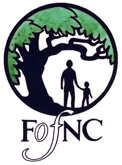Naphill Common - Features
Ecological & Historical Features on Naphill Common
Now that we know that Naphill Common extends to the boundary of Bradenham Manor, and so includes ’The Clumps’, it seems appropriate to say a little about them. The Clumps, sometimes called ’The Rings’, are a group of five (perhaps six) earthworks situated on the narrow piece of land at the Bradenham end of the Common, owned by the National Trust. As you walk along the footpath H2 towards the Umbrella Tree and Bradenham, they are on the right. Each is roughly oval and consists of a low bank with a slight ditch on the outside. The largest is 29 x 24.4 metres and the smallest is 14.9 x 12.7 metres. The questionable sixth one is 12.2 x 11.5 metres and may be the remains of a pond.
Layout of the Clumps by Trevor Hussey
Old postcards showing the Clumps (dates are unknown)
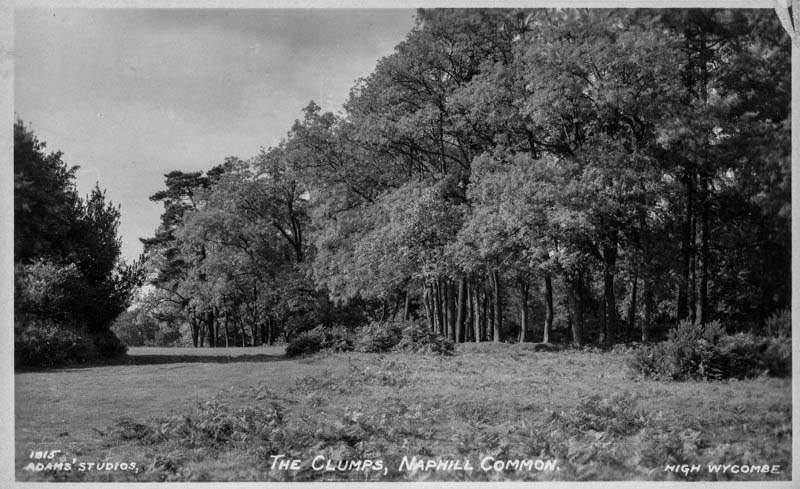
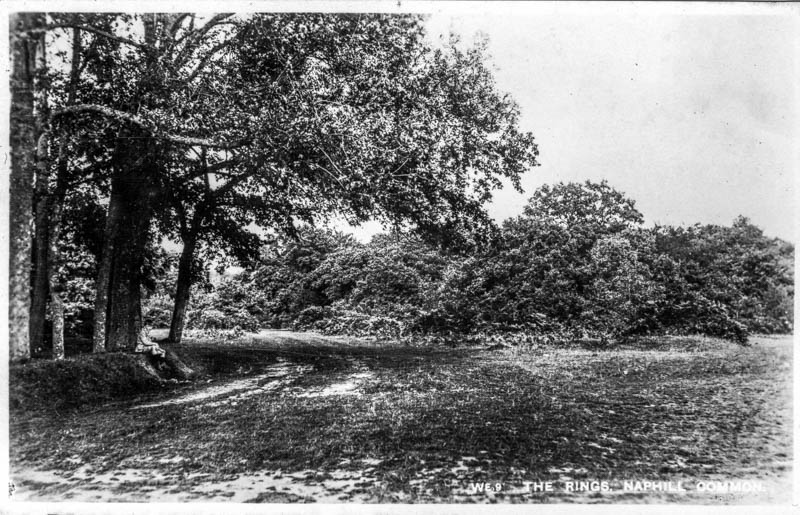
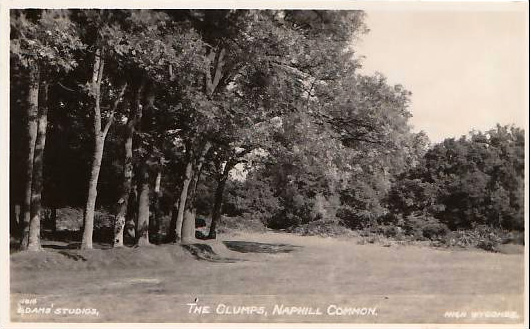
Old postcard showing the Clumps - date unknown
The Clumps are a mystery and have been the subject of speculation and debate for generations. By far the most popular explanation connects them with the drovers, who brought herds of cattle from Wales and the West across the country to the London markets, in the years before the railways made them redundant. The drovers needed to pasture their cattle overnight and, according to the theory, they enclosed them in the Clumps for safety. This story has been repeated many times, including in Rex Leaver’s admirable book Naphill and Walters Ash: Looking Back at Village Life, published in 1999 to celebrate the Second Millennium.
Unfortunately this romantic story is unlikely to be true. There are several facts that count against it. First, the Clumps are so small: even the largest would hold very few cattle and would certainly not provide a significant amount of grass. Second, the bank is very low, quite unlike those used for enclosing livestock and the tiny ditch is on the outside which indicates that, if it had any function at all, it would be to keep animals out, rather than in. Third, while the banks have been worn down in places where paths cross them, there are no signs of entrances. Presumably, the entrances would have been as wide as a farm gate.
So what are the Clumps? There is a clue in the trees. The Clumps have trees on their perimeters and in their enclosures and these are of unusual kinds. There are limes, horse chestnuts and ash trees; all species that are either found nowhere else on the Common or, as in the case of ash, found very infrequently. There are some oaks but they may have invaded from the Common. I suggest that the Clumps, as the name suggests, are 18th or early 19th Century groups of trees. It was very common for landowners to plant trees in small circular enclosures to mark the edge of their estates or screen off their tenant’s humble dwellings.
Extract from Naphill Gazette July 1966
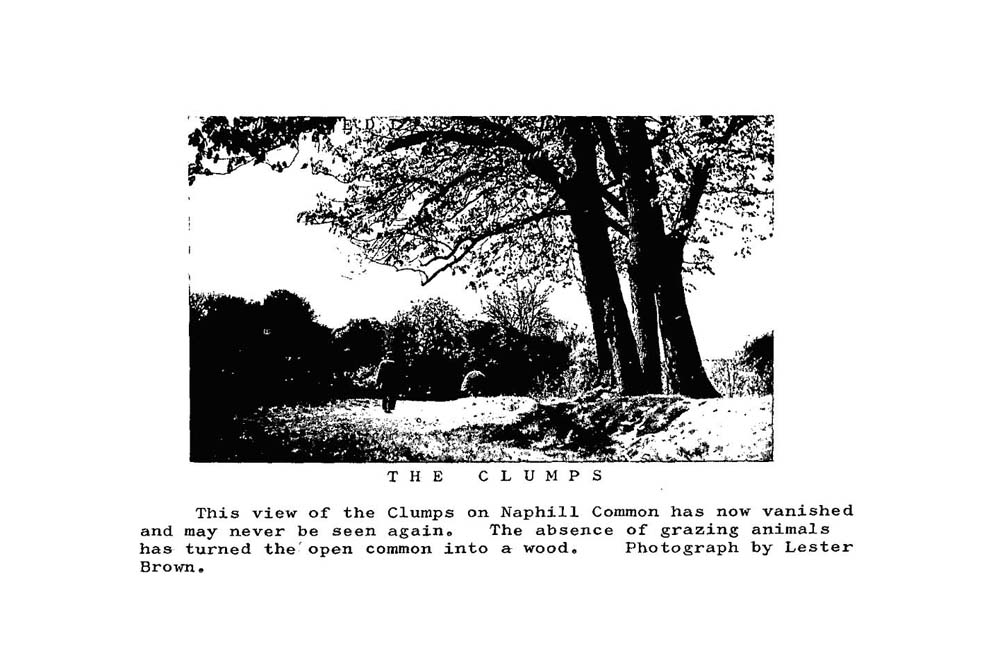
But, what about the drovers? Just behind the Clumps there are two long meadows, now very overgrown, which they may have used, or they could have simply grazed their cattle on the Common itself which was, at that time, open meadow land with a few pollarded trees, and with the necessary pond for livestock. Dare I add that we need evidence to support the folk stories that told of drovers using Naphill Common? As you see, these are contentious issues and they underline the need for The Friends of Naphill Common to encourage some historians to do some detective work
Trevor Hussey Sept 2009
Brickmaking at Walter's Ash circa 1890
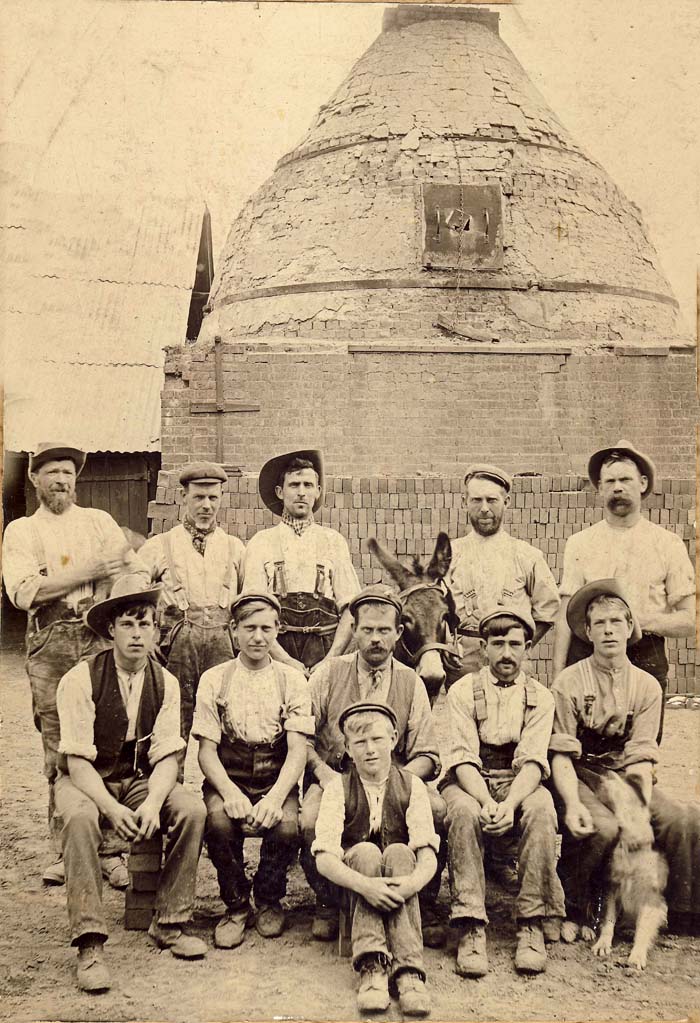
Taken in Free & Moxham's Yard, known as the "small Holdings", situated opposite Ash Place. Kiln Fired bricks and dried (burned) chalk for lime above bricks Chalk mine nearby.
Back Row: (?); Bob Monger (Foreman); (?); (?); Charlie Brown.
Middle Row: Poss. Len Brown; (?); (?); John Hussey; Will Hussey.
Front: Tom Hussey
A sawpit is an oval pit, about 4 meters by 2 meters, over which lumber is positioned to be sawed with a long two-handled saw by two men, one standing (top dog) above the timber and the other (underdog) below. The dogs were metal hooks that held the timber onto the frame. The sawpits normally align along a contour and near a path or track. It was used for producing sawn planks from tree trunks, which could then be cut down into boards, pales, posts, etc. Many towns, villages and country estates had their own saw pits.
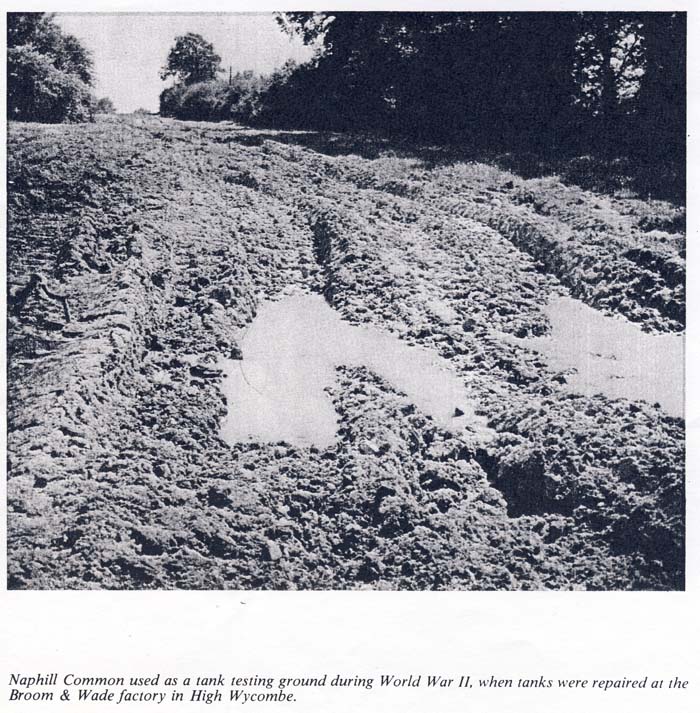
RamTank Churchill's from Broom and Wade
Work Card from Broom and Wade

